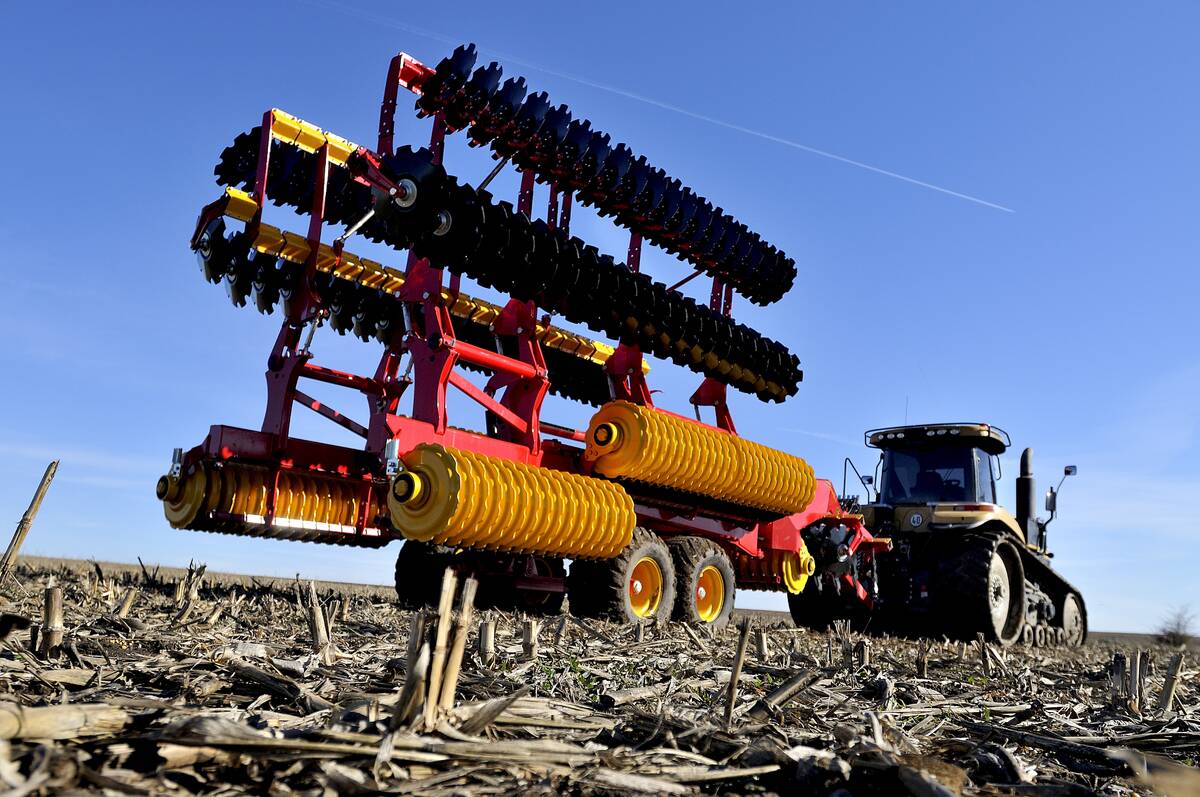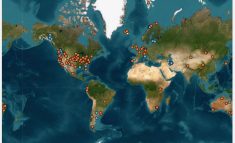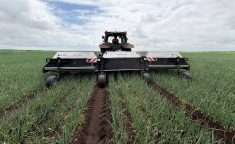Chuck Baresich was frustrated with his dry fertilizer spreader. It was good quality, had some potential, but it never delivered on the width of spread and the lack of control of the spread speed or distance meant wasted fertilizer.
He also had been watching how well some other, more expensive spreaders, were accomplishing those goals.
Why it matters: Dry fertilizer is a cheaper, faster way to deliver fertilizer. But farmers have been moving to liquid fertilizer to more precisely apply fertilizer. With concerns about over-use of fertilizer, especially in areas that drain into Lake Erie, there a push to make broadcast fertilizer spreading more accurate and less wasteful.
Read Also

Evolution of European equipment manufacturers runs deep
A look at how Lemken and Väderstad have evolved from their traditional offerings of tillage equipment to include planting and seeding equipment in their lineups.
Baresich, who manages Haggerty Creek, a crop inputs and consulting company, in Cairo, Ont., decided that modifying his current New Leader spreader boxes made the most sense.
With some help from local dealers, the internet, and open source electronics programming systems, he has a system that now has hydraulically controlled spinners that will throw fertilizer 100 feet when needed, and which has boundary gates to control overlap and edge-of-field issues.
Baresich told the South West Ag Conference in Ridgetown that his first step was to get the Amazone blade system. The Amazone fertilizer spreader is considered one of the leaders of the dry fertilizer world. The blades extend out beyond the plates and can throw the granules to 160 feet.
He ordered them through a local dealer.
Next he created an auger system to variably deliver the fertilizer to each blade. This is where the most math came in, figuring out the rate of delivery using the auger system.
In order to control the actuators for the system, Baresich found an open-source solution.
He got the idea to use Arduino from the company that sells the actuators. Arduino is an open-source electronics platform that relies on easy-to-use hardware and software.
“There are couple of options, but the Arduino was recommended for someone like myself who had no experience with computer programming,” said Baresich. There are other similar open source options, such as one called Raspberry Pi.
Baresich bought an Arduino Mega 2560, a cigarette package-sized circuit board that can be used to control many things. It’s used in everything from microwave ovens to controlling Christmas lights and now to controlling fertilizer spreader actuators.
“The end result is that I have 95 per cent control to the left or the right,” he says. The Arduino component moves four actuators to provide the boundary control for the spread of fertilizer.
Arduino projects are shared and there are websites that explain projects do-it-yourselfers have completed around the world.
Baresich planned his project using TinkerCad, online, 3D design software for projects and 3D printing.
He added boundary gates that come down at the edge of spreader plates in order to control the spread when needed around the end of fields, something that his spreader did not have.
The whole precision system was designed as a kit, so that it can be taken off as a unit if needed.
The retrofit of the spreader was a long-term project for Baresich.
“It took me about one minute to decide to try it, about a month of playing with it at night to determine that I might be able to, and about six months of trial and error to get it to work, mostly at night and on weekends,” he said. “Lots of trial and error. Boy was I excited the first time I got the actuators to move.”
Baresich has since become involved in two other agriculture-related projects using Arduino.













